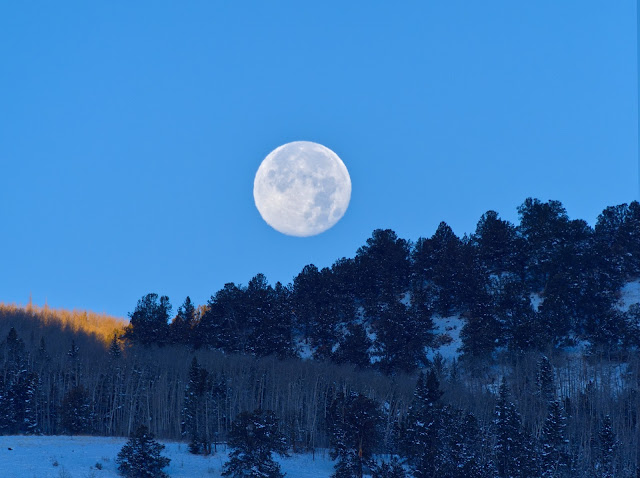The constellation Cepheus is a north circumpolar constellation that never sets when viewed from the latitude of Creede (37.8° N), although it may be partially obscured by mountains when low in the night sky of spring and early summer. It is best viewed in the evening hours of October through December.
Cepheus contains (among other things) one remarkable star known by the nickname "Herschel's
Garnet Star". The nickname comes from a description of the star by the
German-English astronomer William Herschel (1738-1822). It's official name is Mu Cephei.
 |
| An outline of the constellation Cepheus high in the evening sky of 05 December. |
Mu Cephei is the reddish star at the center left edge of the outlined constellation. Here is a closer look:
 |
| E-M1iii + 75mm f/1.8 + softon filter. ISO 1600, 60 s. |
Mu Cephei is only a magnitude-4.1 star as seen from Earth, but we now know it to be one of the largest and brightest stars in our galaxy, with a luminosity about 270,000 times that of our sun. It is a red supergiant similar to Betelgeuse, but larger.
The distance to Mu Cephei is very poorly known, with estimates lying between 1300 and 3100 ly. The star is so large, however, that its angular diameter has been measured by interferometry as 20.5 mas (milliarcsecond). The nearest distance estimate of 1300 ly then yields a diameter of 8.2 au (astronomical units). This would extend well beyond the orbit of Mars (r = 1.52 au) in our solar system. The larger distance estimate yields a diameter of 19.5 au, which would reach out to the orbit of Saturn (r = 9.6 au) . Compared to our sun these values correspond to a diameter that is from 880 - 2100 times larger.
Our sun's mass divided by its volume gives an average density of 1.4 g/cm3. Mu Cephei has a mass of about 19 suns in a diameter 1000 (roughly) times larger. This yields an average density of 19 × 10-9 × 1.4 g/cm3 = 2.7 × 10-8 g/cm3. This is similar to the density of Earth's atmosphere at an altitude above 100 km, i.e., in space. Mu Cephei is essentially a red-hot vacuum!
 |
| Cepheus without the constellation lines. E-M5iii + Sigma 30mm f/1.4 + softon filter. ISO 1600, 30 s. |
































